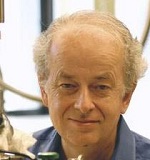Broadband and Multifunctional Flat Optics: From High Performance Components to Cameras
Hosted By: Photonic Metamaterials Technical Group
17 August 2020 11:00 - 12:00
Eastern Time (US & Canada) (UTC -05:00)Metasurfaces are leading to the emergence of new optical components based on dispersion engineering of nanoscale structures, which enable circumventing the limitations of standard refractive and diffractive optics as well as entirely new functionalities.
This webinar will start by presenting broadband metasurface achromatic optics based on metasurface and on hybrid refractive/diffractive design, along with ultracompact spectrometers consisting of a single off axis metalens, where high resolution is achieved by designing chromatic dispersion and eliminating field curvature. New metaoptical components where different functionalities can be accessed by changing either the wavelength, the angle of incidence or the incidence polarization will be presented. As an example, using waveplates with designed arbitrary elliptical birefringence, the eigen-polarizations and the output polarization can be tuned continuously from linear to elliptical by changing the angle of incidence. A new approach to polarization optics, based on a powerful generalization of Fourier optics, which leads to the replacement of conventional phase plates and analyzers, will be discussed. This has led to the demonstration of a compact, single shot, full Stokes polarization sensitive camera using a single metasurface, thus dramatically reducing the complexity of existing cameras and increasing their functionality.
Finally, taking inspiration from how jumping spiders capture their prey, a new depth sensing camera at video rates based on co-design of hardware (metalenses) and software, which requires far computational resources than stereo and time of flight cameras has been developed. It combines spatially multiplexed metalenses and efficient computations to measure depth from image defocus. Compared with previous passive artificial depth sensors, this bioinspired design is lightweight, single-shot, and requires much less computation.
What You Will Learn:
- Inverse design of metasurfaces
- Design of Broadband and Multifunctional metasurfaces
Who Should Attend:
- Students, researchers and professors
About the Presenter: Federico Capasso, Harvard University
 Federico Capasso is the Robert Wallace Professor of Applied Physics at Harvard University, which he joined in 2003 after 27 years at Bell Labs where his career advanced from postdoctoral fellow to Vice President for Physical Research. He pioneered bandgap engineering of heterostructure semiconductor materials and devices, leading him to the invention of the quantum cascade laser, and flat optics based on metasurfaces, including the generalized laws of refraction and reflection and high performance metalenses. He developed MEMS based on the Casimir force and measured for the first time the repulsive Casmir force. He is a member of the National Academy of Sciences, the National Academy of Engineering, the National Academy of Inventors and a Fellow of the American Academy of Arts and Sciences (AAAS) and a recipient of numerous awards including the Balzan Prize, The King Faisal Prize, the IEEE Edison Medal, the APS Arthur Schawlow Prize, the AAAS Rumford Prize, the OSA Woods Prize and the Enrico Fermi Prize.
Federico Capasso is the Robert Wallace Professor of Applied Physics at Harvard University, which he joined in 2003 after 27 years at Bell Labs where his career advanced from postdoctoral fellow to Vice President for Physical Research. He pioneered bandgap engineering of heterostructure semiconductor materials and devices, leading him to the invention of the quantum cascade laser, and flat optics based on metasurfaces, including the generalized laws of refraction and reflection and high performance metalenses. He developed MEMS based on the Casimir force and measured for the first time the repulsive Casmir force. He is a member of the National Academy of Sciences, the National Academy of Engineering, the National Academy of Inventors and a Fellow of the American Academy of Arts and Sciences (AAAS) and a recipient of numerous awards including the Balzan Prize, The King Faisal Prize, the IEEE Edison Medal, the APS Arthur Schawlow Prize, the AAAS Rumford Prize, the OSA Woods Prize and the Enrico Fermi Prize.
